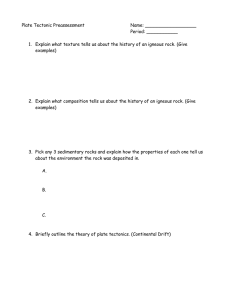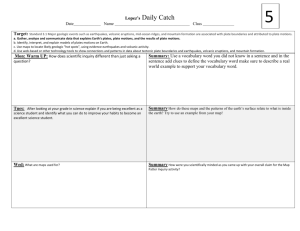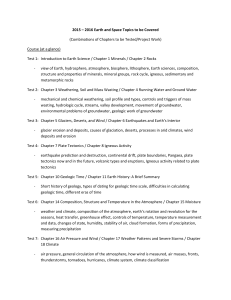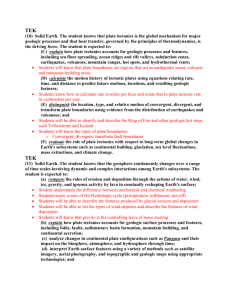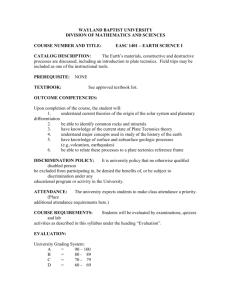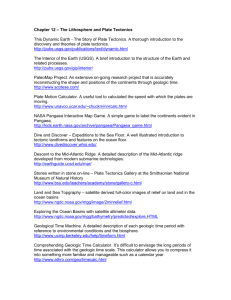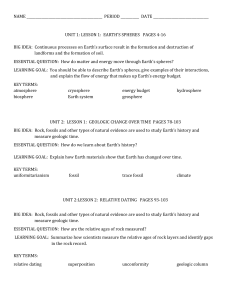I Can Statements
advertisement
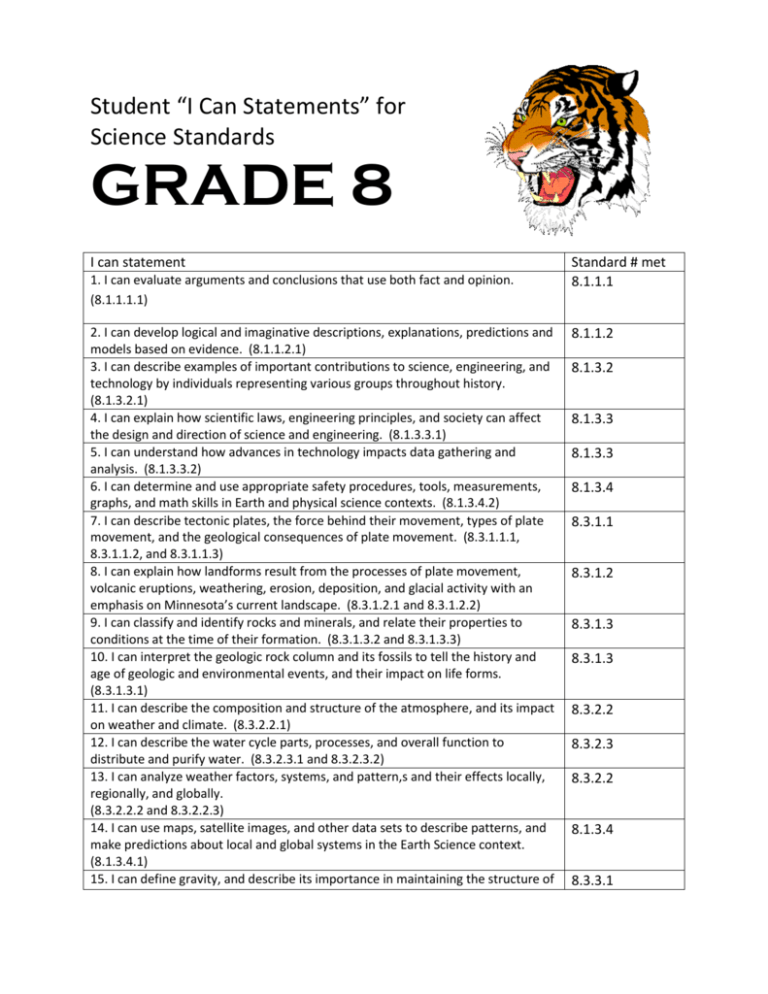
Student “I Can Statements” for Science Standards GRADE 8 I can statement 1. I can evaluate arguments and conclusions that use both fact and opinion. (8.1.1.1.1) 2. I can develop logical and imaginative descriptions, explanations, predictions and models based on evidence. (8.1.1.2.1) 3. I can describe examples of important contributions to science, engineering, and technology by individuals representing various groups throughout history. (8.1.3.2.1) 4. I can explain how scientific laws, engineering principles, and society can affect the design and direction of science and engineering. (8.1.3.3.1) 5. I can understand how advances in technology impacts data gathering and analysis. (8.1.3.3.2) 6. I can determine and use appropriate safety procedures, tools, measurements, graphs, and math skills in Earth and physical science contexts. (8.1.3.4.2) 7. I can describe tectonic plates, the force behind their movement, types of plate movement, and the geological consequences of plate movement. (8.3.1.1.1, 8.3.1.1.2, and 8.3.1.1.3) 8. I can explain how landforms result from the processes of plate movement, volcanic eruptions, weathering, erosion, deposition, and glacial activity with an emphasis on Minnesota’s current landscape. (8.3.1.2.1 and 8.3.1.2.2) 9. I can classify and identify rocks and minerals, and relate their properties to conditions at the time of their formation. (8.3.1.3.2 and 8.3.1.3.3) 10. I can interpret the geologic rock column and its fossils to tell the history and age of geologic and environmental events, and their impact on life forms. (8.3.1.3.1) 11. I can describe the composition and structure of the atmosphere, and its impact on weather and climate. (8.3.2.2.1) 12. I can describe the water cycle parts, processes, and overall function to distribute and purify water. (8.3.2.3.1 and 8.3.2.3.2) 13. I can analyze weather factors, systems, and pattern,s and their effects locally, regionally, and globally. (8.3.2.2.2 and 8.3.2.2.3) 14. I can use maps, satellite images, and other data sets to describe patterns, and make predictions about local and global systems in the Earth Science context. (8.1.3.4.1) 15. I can define gravity, and describe its importance in maintaining the structure of Standard # met 8.1.1.1 8.1.1.2 8.1.3.2 8.1.3.3 8.1.3.3 8.1.3.4 8.3.1.1 8.3.1.2 8.3.1.3 8.3.1.3 8.3.2.2 8.3.2.3 8.3.2.2 8.1.3.4 8.3.3.1 our solar system. (8.3.3.1.2 and 8.3.3.1.3) 16. I can compare and contrast the planets and the moons of our solar system in terms of size, location, and composition. (8.3.3.1.4) 17. I can describe the sun as a star in terms of location and size within the Milky Way galaxy, and its interactions with the Earth and moon (seasons, and weather/climate patterns). (8.3.2.1.1, 8.3.2.1.3, 8.3.3.1.1, and 8.3.3.1.5) 18. I can identify and distinguish between chemical and physical changes of matter using the particle model of matter. (8.2.1.2.1, 8.2.1.2.2, and 8.2.1.2.3) 19. I can use physical properties to examine, identify, and classify substances and to separate mixtures. (8.2.1.1.1 and 8.2.1.1.2) 20. I can recognize the properties of acids and bases, and their relationship to salts. (8.2.1.2.4) 8.3.3.1 8.3.2.1 and 8.3.3.1 8.2.1.2 8.2.1.1 8.3.1.2


